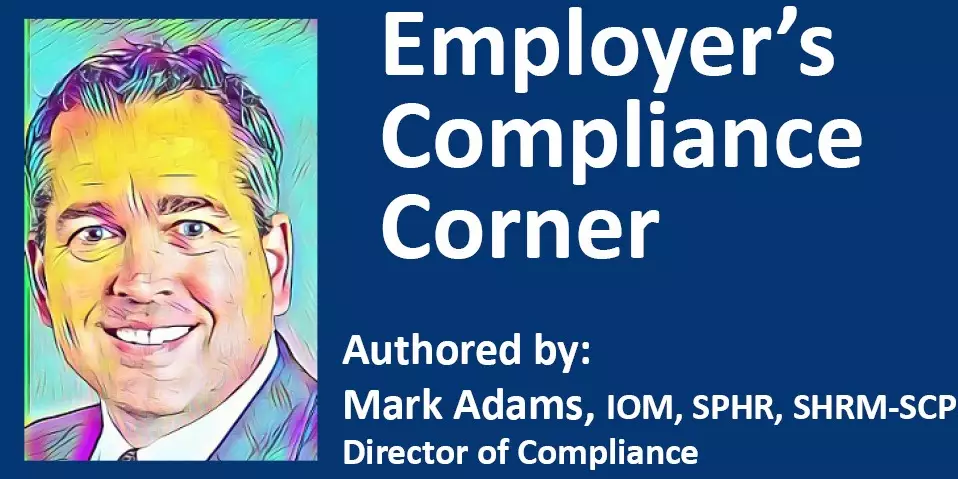
For companies with 100 or more employees or federal contractors or subcontractors with 50 or more employees plus such a contract or subcontract totaling $50,000 or more, EEO-1 Reporting is a rite of passage. Each year we log our information into a governmental portal. Once upon a time, it was by a September 30, deadline. More recently, the deadline has been March 31. This year, the deadline is set for July 19 (as of now).
Why all the changes? Well, you can thank COVID for that as employers are being afforded additional time for making up for lost time. Specifically, covered employers will be doubling up on the EEO-1 reporting this year by filing reports for both calendar years 2019 and 2020.
However, the change in deadlines is not the only change. There is a new portal in place: www.eeocdata.org. For previous filers, this means using your most up-to-date log information (users should have received via the mail new login information in April).
However, other aspects have not changed; but rather merely occur within the new portal environment. For example, For companies with new points of contact assuming this responsibility, it means updating that contact information on the portal before filing can take place (as unique company ID and passwords that are used for filing purposes are unique to company contact and email addresses that are on file). For companies who have acquired, merged or have spun off a part of the business, there remain specific pages for filers to update the affected company and contact information involved (though on this point, such company changes are typically undertaken by a representative from the parent company to do this).
Moving past the Account Information setup or updating needs comes the moment in which you can file. There are one of two approaches. First, companies can file through an online form for keying in the data. Alternatively, data can be uploaded via a spreadsheet (for more details on the format for this process – the EEOC has published these specifications on their eeocdata.gov website).
For companies with a single location, there is a single “type 1 report” that is filed containing the data for that location.
For covered employers with multiple locations, there is the need of filing multiple reports:
- a “Consolidated” or “Type 2” Report (which represents a rollup of all data from supporting other reports for that covered employer);
- a “Headquarters” or “Type 3” Report (representing employees residing at a company’s headquarters);
- a “Type 4” Report (representing employees working at a location that has 50 or more employees); and
- a “Type 8” Report (representing employees working at a location that has fewer than 50 employees).
In short, for multi-location employers, there are a number of reports to file in a year.
Moreover, since covered employers are reporting for both 2019 and 2020 that means – yep – you are doing all this twice!
For each year, the reports are designed to capture employee demographic information for a given pay period chosen by the covered employer that occurs between the months of October and December. In doing so, the employer submits their number of employees on two levels. First, they are to identify their employee counts by gender (e.g. male or female and noting the data on employees who do not identify as a male or a female in the comment box found on the form). Second, they are to identify their employee counts by race and ethnicity (most notably those who are Hispanic, White, Black or African American, Native Hawaiian or Pacific Islander, Asian, or Two or More Races).
Upon completing the form, there is a requirement to certify the data prior to its submission (by checking the certification box on the form). Failure to certify the information will render that report incomplete.
A company has to go through this process to complete, certify and submit their 2019 information first before completing their 2020 report. In completing the 2020 report, an employer does not need to use the same pay period as that used in 2019. For instance, an employer could use the first pay period in October 2019 for their 2019 report while choosing to use the second pay period in December 2020 for completing their 2020 version.
While there is still plenty of time to complete this reporting, I recommend that you do not wait until the last minute. With covered employers nationwide having this responsibility, reporting and systems questions are collected through the EEO-1 portal and answered as they are received with inevitable bottlenecks and delays in receiving responses often the norm. We shall see if the new portal is any different. But if you have to file this year, time to double-time it!
Thank you for viewing this article in EANE’s Employer’s Compliance Corner Blog, Authored by our Director of Compliance, Mark Adams. Please visit again soon to stay up to date on today’s compliance updates and best practices for employers.